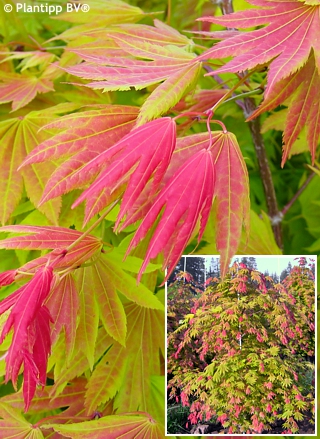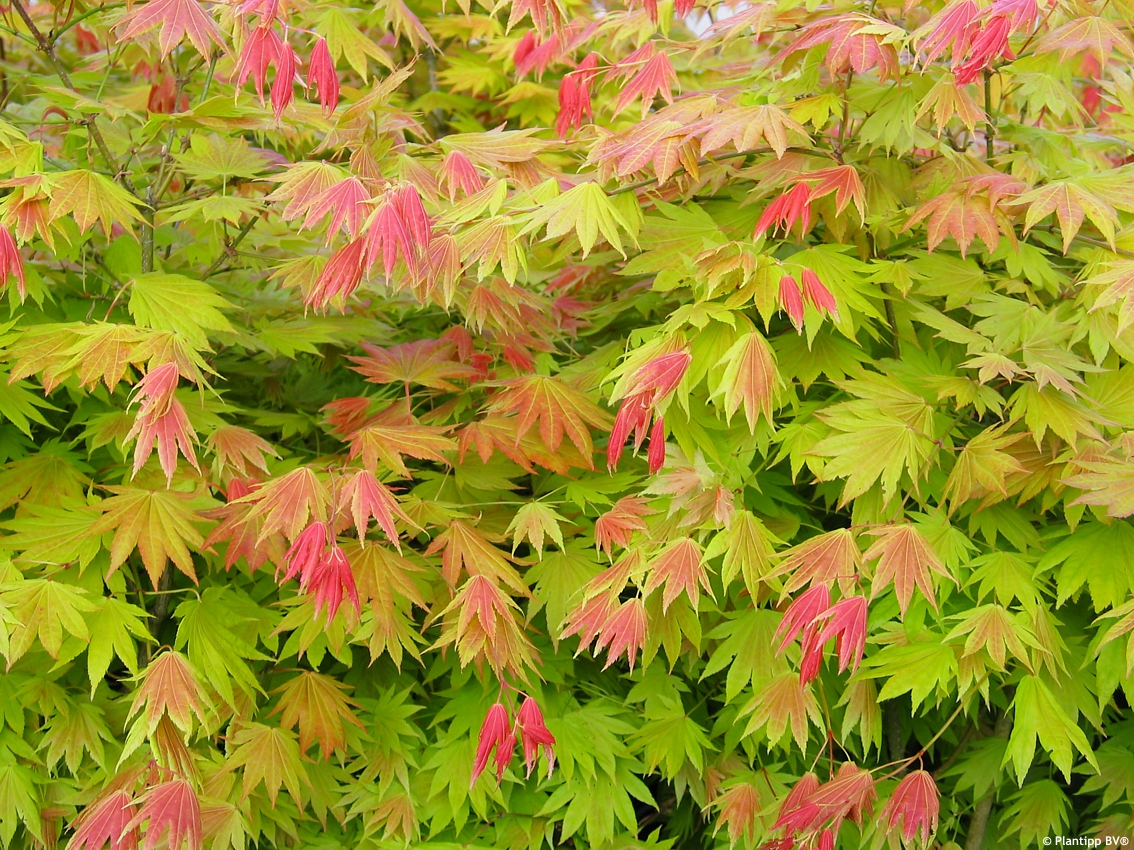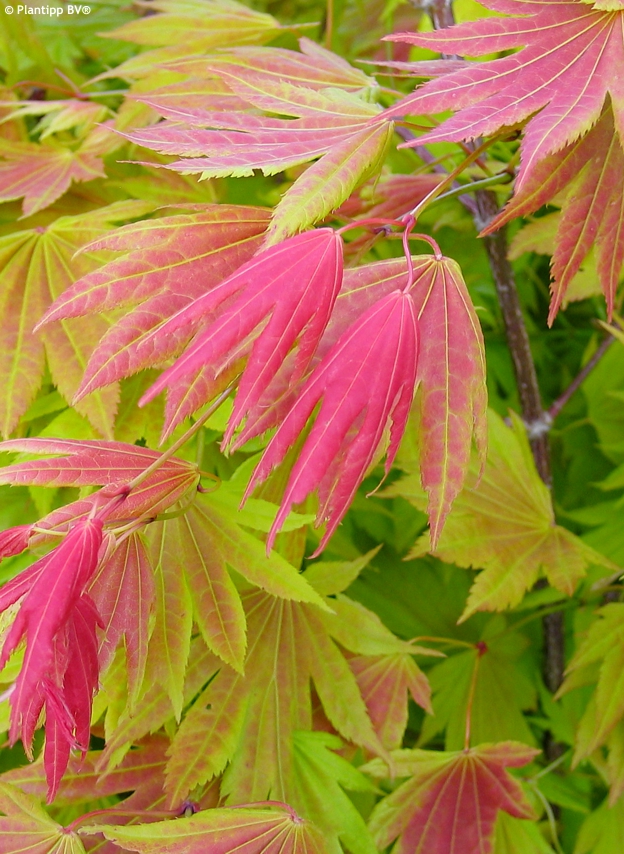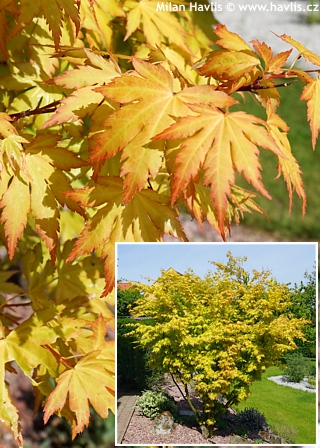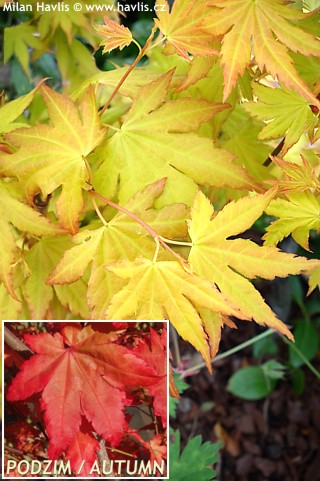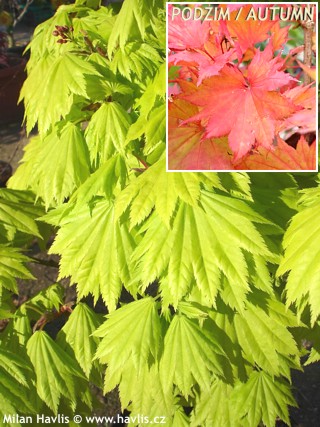Acer shirasawanum ‚Munn001‘ MOONRISE Shirasawa maple, Japanese maple
size/type
small tree,taller shrub
usual height
3-5m
usual width
2-4m
leaves
deciduous broadleaf
colour of leaves
flowers
less showy but noticeable
colour of flowers
blooming time
April-May
location
full to partial sun
soil type
acidic (peaty)
soil moisture requirements
evenly moist (dislikes drought)
USDA zone (lowest)
5 (down to -29°C)
winter protection
for zone 5+6

for zone 7

categorized
Acer
Japanese maples are the crème de la crème of every garden. They are compact, dense shrubs or majestic looking small trees. Every garden can have one without a need for simulating Japanese garden style. Currently, there are numerous varieties in the market, but we prefer to stick with the old-time favourites that proved to do well in our Central European climate or test new ones to see whether they deserve the attention.Description of the plant:
Shirasawan’s maple is a sought-after species of Japanese maple valued mostly for its unique leaf shape. To date (July 2020) there are 17 recognized varieties, and MOONRISE is a recent introduction from the USA where its inventor Carl A. Munn patented it as PP16718 in 2004. He discovered it in about 1987 as a naturally occurring mutation of Aureum variety. It had different colour, faster growth, and better resistance to sun scorch. MOONRISE Shirasawan’s maple produces bright lime yellow-green foliage in early spring which gains scarlet red flush as they open to its typical seashell shape with 7-11 lobes. As the leaves mature, red hues disappear and pop up only on newly emerging leaves at the branch tips. An important feature is also its great tolerance to full sun – it can take all day sun, only in dry soils the top of the plant may manifest some sun scald during the hottest days of summer unless regularly watered.
It grows rather fast when young, making an upright shrub with slightly V-shaped canopy. A 17-year-old plant in the inventor’s nursery was 4m tall and 3.5m wide, and the ultimate size of a mature specimen is expected to reach about 5 by 4 meters.
All green or yellow-leaved Japanese maples do best in filtered sunlight or part shade in neglected gardens. But if you are ready to water them during hot and dry spells of the season you can grow recommended varieties in full sun, too. Red-leaved maples on the contrary NEED full sun to colour well, even the dissectum type with deeply cut foliage.
Japanese maples prefer light, acidic, well-drained soil that will retain moisture – keep them mulched at all times. If you feel you need to feed it, use balanced, slow-release fertilizers only. They can be pruned in early winter or trimmed and shaped for bonsai in early summer. Still, I assume that each Japanese maple is so beautiful only if left to its own devices without any intervention, making each one an unrepeatable original. Plants older than 3-5 years (wood maturity pending) are fully hardy to about -29°C (USDA zone 5).
Last update 21-07-2020
QUICK PRICE OVERVIEW
CURRENTLY SOLD OUT
WANT TO TRY A SIMILAR PLANT?












